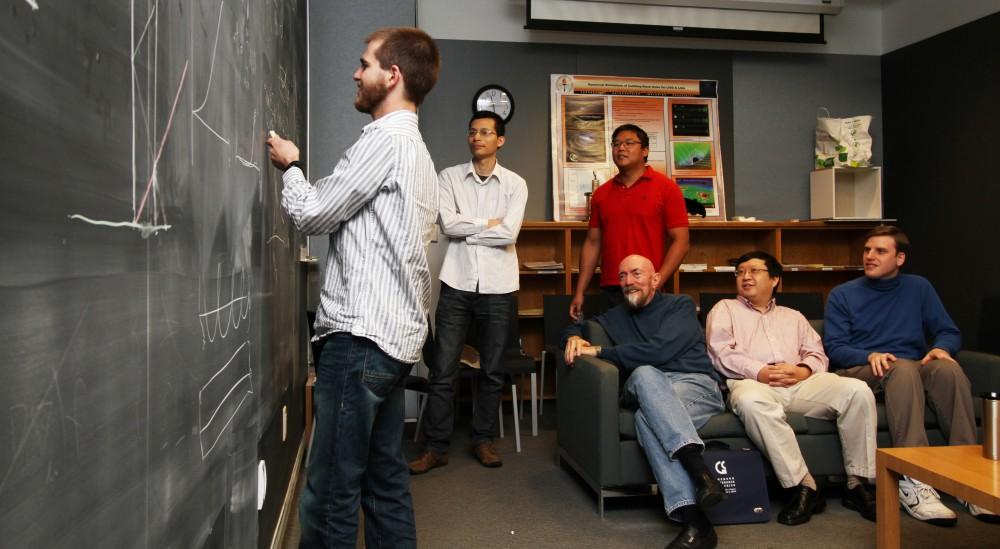Kip Thorne to visit for Fall Arts Celebration

GVL / Courtesy of Mark Scheel
Nov 16, 2015
Science and art will collide with a visit from astrophysicist Kip Thorne as part of this year’s Fall Arts Celebration.
Thorne will visit Grand Valley State University and give his lecture “Discovery and Collaboration” at 7 p.m. on Nov. 16 in the Eberhard Center on the Pew Campus. Thorne is a theoretical physicist who served as the Feynman Professor of Theoretical Physics at Caltech. His research has focused on Albert Einstein’s general theory of relativity and astrophysics, specifically looking at black holes and gravitational waves. He is also a cofounder of the Laser Interferometer Gravitational Wave Observatory (LIGO) Project.
Thorne will discuss his work on the movie “Interstellar” and what it was like to collaborate with professionals in the movie industry.
“The lecture is about my collaboration with filmmakers, but also with artists and musicians at the interface between science and the arts,” Thorne said. “I’ll give some sense of what it’s like for a hard-nosed scientist to spend his whole career doing science and then to enter into the world of Hollywood.”
For Thorne, movies like “Interstellar” help convey complicated scientific ideas in an accessible, visual format. He said it is necessary to collaborate with artists to create a visual, even during research so that the discoveries you’ve made can be communicated to others.
“I don’t know how you convey the ideas of this sort effectively without at least the aid of art, of visuals,” Thorne said. “You can’t even do research without the aid of visuals. The interface with art and film is central to our research as well as to our communication with nonscientists.”
Physics professor Brett Bolen said non-science students would benefit from Thorne’s lecture by learning about the value of interdisciplinary collaboration.
“I hope that everyone who attends the talk recognizes that there’s a place in the world for artists to understand to science and for scientists to understand art,” Bolen said. “To be whole person, you need to know something about both areas. We’re a liberal arts college and that’s what a liberal arts education means.”
For Thorne, learning about astrophysics and the universe is a cultural experience, regardless of career path. He said the discoveries made about our universe will be the legacy we leave behind in history.
“We live in a culture where science is a central and integral part of it,” Thorne said. “When we look back on the era of the Renaissance we ask ‘what did all of humanity get out of that era?’ People will say ‘great art and great music.’
“Five-hundred years from now when people look back on our era, they will say what we got from that era is an understanding of the universe.”
Bolen said Thorne has made many contributions to the field in the theory of relativity and helped to grow our understanding of the universe.
“Dr. Thorne has been a leader in the field of general relativity, which is Einstein’s theory of gravity, for over 50 years,” Bolen said. “There is hardly a subject in the field that he hasn’t even calculated or been a major part of.
“(Thorne)’s helped us understand black holes better, he’s helped us understand the early universe better, he has been pushing toward building LIGO, which is about to make the first detections of black holes. This will enable us to measure the universe in ways that we never have in the past and give us new information on the universe.”
Thorne is working on a new project collaborating with composer Hans Zimmer to create film clips and musical scores featuring the sources of gravitational waves. Thorne calls this the “warped side of the universe,” and it will include clips of colliding black holes and the birth of the universe.
“Hans is going to compose music to go with those film clips,” Thorne said. “Then I’ll put together words basically to convey the beauties of the universe and a whole new approach to studying the universe.”






















